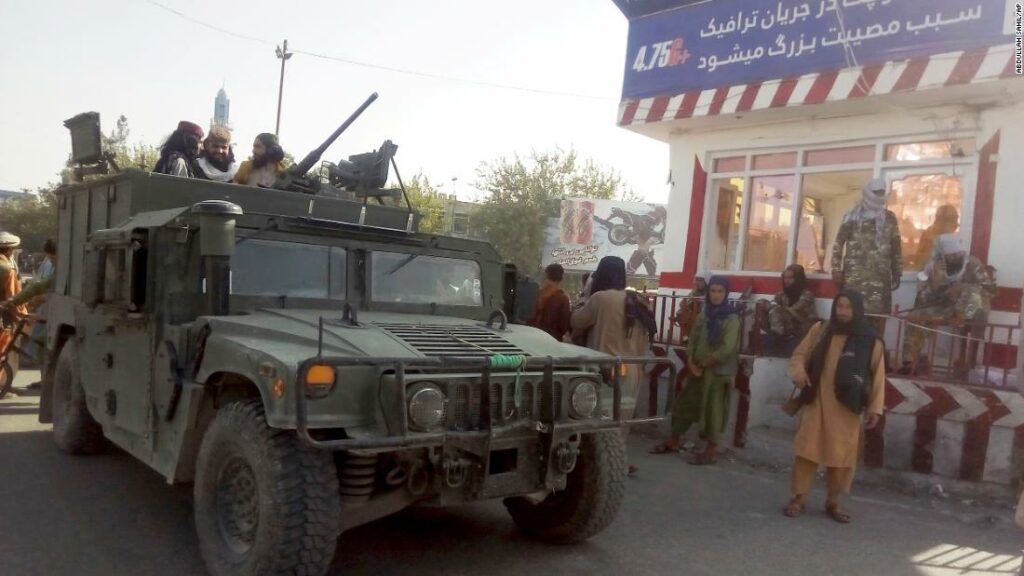Analysis: Things look grim in Afghanistan, even with US airpower. In 21 days, they could be much worse

At least sixThere is another, pressing complication: the United States has made it clear that 21 days from now, whenRegardless of who is right, it is startling to see the US, after so long wielding extraordinary might daily in Afghanistan, reduced to pleading for a peaceful settlement. The hope the 2021 Taliban had learned — from their period in power as a pariah in the 1990s — that they need international aid to keep the country afloat, still underpins a lot of US diplomacy. That can only seem more misguided after Sunday’s rejection of any possible ceasefire by the Taliban. They seem to want victory, and little else.So what next? This is already shaping up to be a terrifying summer for millions of Afghans. The less optimistic Afghan voices I heard during an April trip conceded they might, if the summer months went badly, lose parts of the country. They admitted they might see the Taliban return to the territory of Afghanistan and then use this partial “emirate” — as the militants like to dub the areas they control — to begin to negotiate with added legitimacy. But the cities they are pressuring, or have taken, are beginning to form a circle around Kabul.The capital — home to possibly as many as 6 million people, with all the money, arms and security that 20 years of billions of American dollars can buy — does not seem vulnerable to a Taliban takeover thus far. It would be a steep challenge for the insurgents to stroll into the city, caught as it is in a hilltop bowl, with the same ease with which the Northern Alliance expelled them back in 2001. But the Taliban have proven how penetrable Kabul is to them in the past week, by assassinating government spokesmen, a local official and even prison prosecutors.Similar lurches forwards by the insurgency have paused before. It is also possible Afghan security forces will see success in the key city of Lashkar Gah in Helmand province, and find a bottom line that they are able to hold.But it is the broad look of consternation and confusion from Western officials about how to respond that must give the insurgency the greatest succor. After more than a dozen years of repeating the same talking points that rested on what they thought was a flawless strategy, the West is truly unsure what to say. Plea for peace, threaten more airpower, or insist the main cities will hold?The sort of society that Western money bought for allied Afghans was often corrupt, unfair and at times undemocratic. Yet what comes next is palpably worse still. Warlordism risks filling the gap between government collapse and insurgent domination. The Taliban are showing their old, ugly face. UNICEF drew attention last week to the flogging of a 12-year-old boy in Faryab by “a member of an anti-government element. There have been several reports of insurgents killing government loyal officials. The Taliban’s open, English-speaking spokesman, Suhail Shaheen, often decries such brutality. But that does not stop it happening.At least 27 children were killed and 136 injured during the previous 72 hours in Afghanistan, the United Nations Children’s Emergency Fund (UNICEF) said in a statement Monday. “These atrocities are evidence of the brutal nature and scale of violence in Afghanistan which preys on already vulnerable children,” it added.Another threat, as security collapses, is the return of the reason the US went there in the first place: terrorism. Al Qaeda are doing well, Afghan officials have told me, and there are said to be thousands of loosely affiliated foreign fighters on the battlefield.A “24-7 hype party” is how Rita Katz, head of extremist monitoring group SITE, described al Qaeda social media channels. “In some ways, it feels like the earlier days of the Syria Civil War amid Nusra Front’s victories — except now on a completely different scale, given the Taliban’s horrifying momentum,” Katz tweeted.History has repeated itself so many times already for Afghans, they are beyond farce now. The enduring question of the next months is whether the West — faced with the discomfort of the apparently inevitable happening — decides to change course, if it is not too late.






